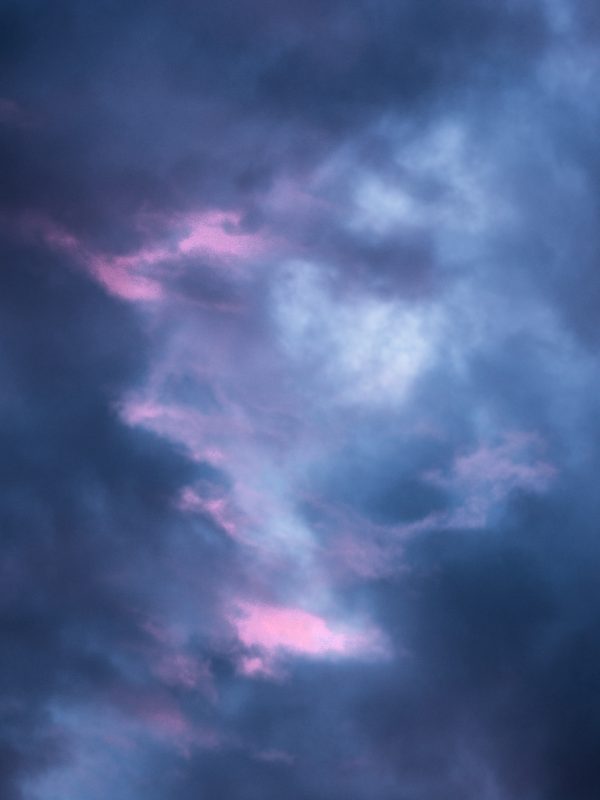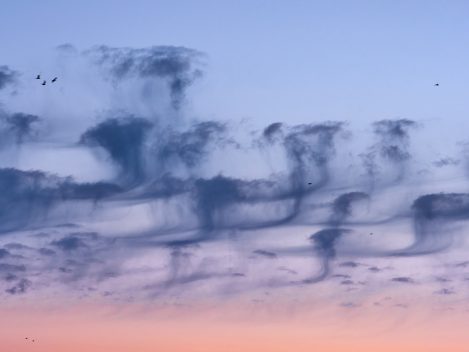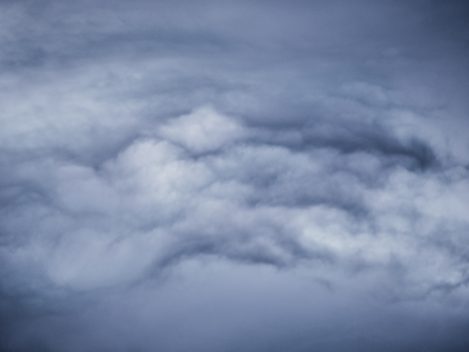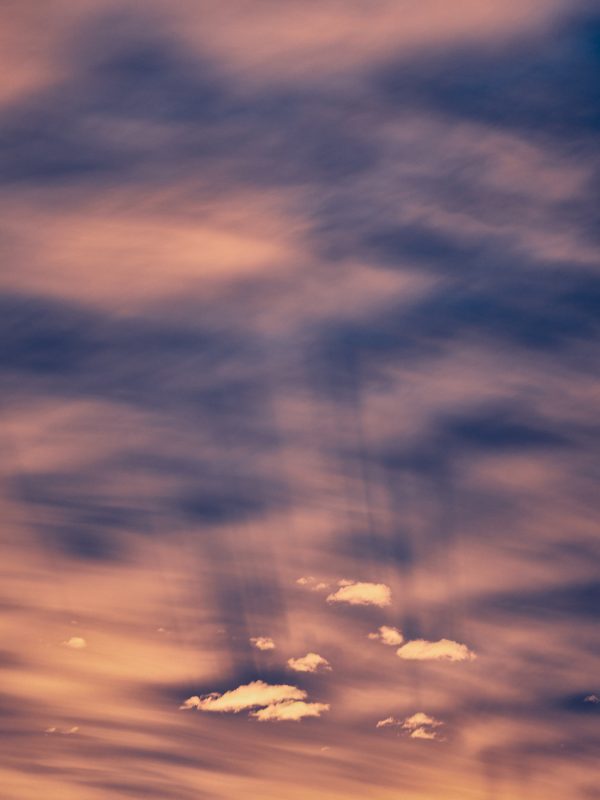What was I thinking?

Adam Pierzchala
Now retired, I have more time to enjoy being out with my camera looking for scenes and subjects that pique my interest, especially coastal, woodland and close-ups. Although I still have several rolls of 35mm and MF film in my freezer, I shoot almost exclusively digital now
Over the years, my outdoor photography has moved from the wider vistas to more intimate scenes, although I still enjoy grand landscapes given the right light. I am now drawn to natural forms, be it lichens, rocks, reflections on water, trees, other botanicals - and yes, rust and corrosion too … all of which entail patterns and textures.
Understanding abstract paintings has usually eluded me, and to be honest, it still does. Apparently, I should think about what story the artist/painter was trying to put across, or to come up with my own interpretation of what these paintings mean, but mostly they leave me somewhat bemused and feeling that I’ve missed the point. Mark Rothko, Wassily Kandinsky, Piet Mondrian are all very well known and frankly not really my cup of tea: random splashes of paint on canvas, coloured lines, blocks of colour… Granted, some have quite pleasing patterns or shapes, but that’s as far as it goes – they don’t invoke any strong feeling or deeper meaning, and I don’t linger over them. I’ve recently come across some contemporary artists, for example, Juan Jose Hoyos Quiles, Riszky Rach, Francesco D’Adamo, Cristina Cruz and others. Some of their works, while still predominantly coloured patches and shapes, are more to my taste, but still not really arresting. As to Dali, I find his work disturbing, which I believe was his intention, but I don’t enjoy being disturbed!
Not so long ago, I stumbled across an article, or rather a blog post, by Mayank Jain, specifically about Rothko and more broadly about interpreting art.
This explains how to look at abstract art and how it might relate to my own experiences. Statements such as “You sense the artist's deliberate attempt to avoid shoving his ideas towards the observer. It is what it is.”, or “The paintings really don't say anything specific.” go some way to reassure me that it’s OK to just look at a piece of art and not expect to find a deep meaning. Then I read “The meaning that we seek in life …. is to be found within us, and in our understanding of the world around us. That meaning is what we choose to ascribe to things in our life.” I believe this explains what shapes our reaction to, and understanding of, art and most probably why we photographers release the shutter.
In the early-mid 1920s, American photographer Alfred Stieglitz created his famed series of photographs of clouds, which he called "equivalents", meaning that he wanted “to record something so completely that those who see it will relive an experience of what had been expressed.” According to an essay at the Phillips Collection website, the series, "A symbolist aesthetic underlies these images, which became increasingly abstract equivalents of his own experiences, thoughts, and emotions".
Waldo Frank, an American novelist, historian, political activist, and literary critic, had earlier suggested that the impact of Stieglitz’s photography was due to the individuals he photographed. Stieglitz was none too pleased, as Waldo Frank seemed to accuse him of simply recording what appeared in front of his camera. This drove him to create that series of cloud studies "to show that (the success of) my photographs (was) not due to subject matter – not to special trees or faces, or interiors, to special privileges – clouds were there for everyone…"
Recently, in fact, while I was researching about abstract art in preparation for this article, I came across Norwegian artist Nina Enger whose abstract oil or acrylic paintings are often inspired by what she sees when out walking in nature. Seeing her work, in particular the paintings that appear to be clouds, really resonated with me. She also creates fine landscapes!
Which brings me to the subject of this article: what was I thinking, or perhaps what feelings drove me to recently make cloud photographs?
My own strongest memories of clouds go back to when I was 13, when my father first took me climbing in the Alps and later the Dolomites (and sometimes my mother came too, even across glaciers!). I was fascinated by clouds lazily and quietly drifting among the peaks and spires, sometimes coming up from below us, sometimes looking very ominous; I found their slow, serene motion and the total silence around quite mesmerising. Many decades later, it was the big skies over open seas, and the wonderful and very changeable Icelandic skies, that caught my attention and became subjects for my camera, although always as single frames.
During this year’s (2025) spring and summer, I was quite taken by cloudscapes over the big city where I live and having a decidedly non-photogenic urban foreground, I was moved to shoot just the skies. That first evening in mid-April was the start of an unexpected series of cloudscapes that ran through to late July. Till now, I had only shot maybe up to 4-5 images in a mini-series, but over those three months or so, I amassed over 130 frames! With a clear view above rooftops, I could shoot side-lit and into-the-sun, or catch occasional light on the underneath of clouds, leaving the tops in dark shadow.
On several evenings, the attraction was not saturated sunset colours but softer opposing colours; indeed, in quite a few of the images here, I desaturated the blues or even the whole image as the colours were utterly surreal. In contrast, there was one particular evening when the setting sun lit the clouds with a fiery glow, transforming them into orange flames as though these were giant coronal eruptions from the sun itself. On rather dull evenings, it was the monochromatic tones that caught my eye; other times, the mix of different types of cloud made the picture. I was surprised how certain images on my computer monitor were so different to looking through the viewfinder: it seemed that I was looking down rather than up, or that there was a definite 3D near-far perspective. Curiously, sometimes the final image looks rather like a reflection in water. And when a bird or three would fortuitously fly through the scene, this unexpected wildlife added a layer of interest!
Watching these scenes unfold prompted me to fetch my camera; these were too good to miss! I was enthralled with all that was happening above me and I wanted - needed - to record these views. I have no doubt that in some way, the memories of watching clouds in the mountains were coming to the surface, feeding my desire to make photographs. Is this what is meant by having a story to tell, being expressive?
I certainly was not using the camera specifically with the intent of conveying my feelings, Stieglitz was far from my mind; I just wanted a record of how arresting a natural scene can be and to share this. I know for sure that in many instances my non-photographer friends don’t notice what I do when we are out on walks, and perhaps perversely, it gives me some pleasure to show them what they had missed.
Just recently – and after I had made my own “accidental” clouds series – I read a blog post by Guy Tal in which he discusses how he has changed his approach to the concept of “equivalence”. Guy no longer tries “to make others feel “relive”— exactly what I have experienced and what it meant to me” as Stieglitz said. Thank you, Guy, that has put my mind at rest. I don’t need to create images that make a potential viewer feel exactly as I did, i.e. create an equivalent! Phew! It’s OK to photograph for myself. Indeed, Guy proposes that creating a full equivalent is probably impossible as there’s no way that a photographer can guarantee the viewer will receive the image exactly as visualised by the artist.
But Rothko also said, “And the fact that a lot of people break down and cry when confronted with my pictures shows that I can communicate … basic human emotions…. If you … are moved only by their color relationships, then you miss the point.”
Oh dear, am I still missing the point? Maybe not: I do like colour in my photography, but also tonal and textural relationships and I am quite content to record these in my own way, for myself and to share with others. Also, I do shoot in infra-red monochrome, especially when summer greens are dominant, I don’t need colour.
- Nebula
- Flights of Fancy
- Omen
- Brooding
- Aliens Incoming
- From a Watery World
- Flames of Wrath
- Reflections
- Serenity
- Maelstrom
- Ejection
- Portal
- Ripples
- Shafts of Blue
- Turbulence
- Eruption

























